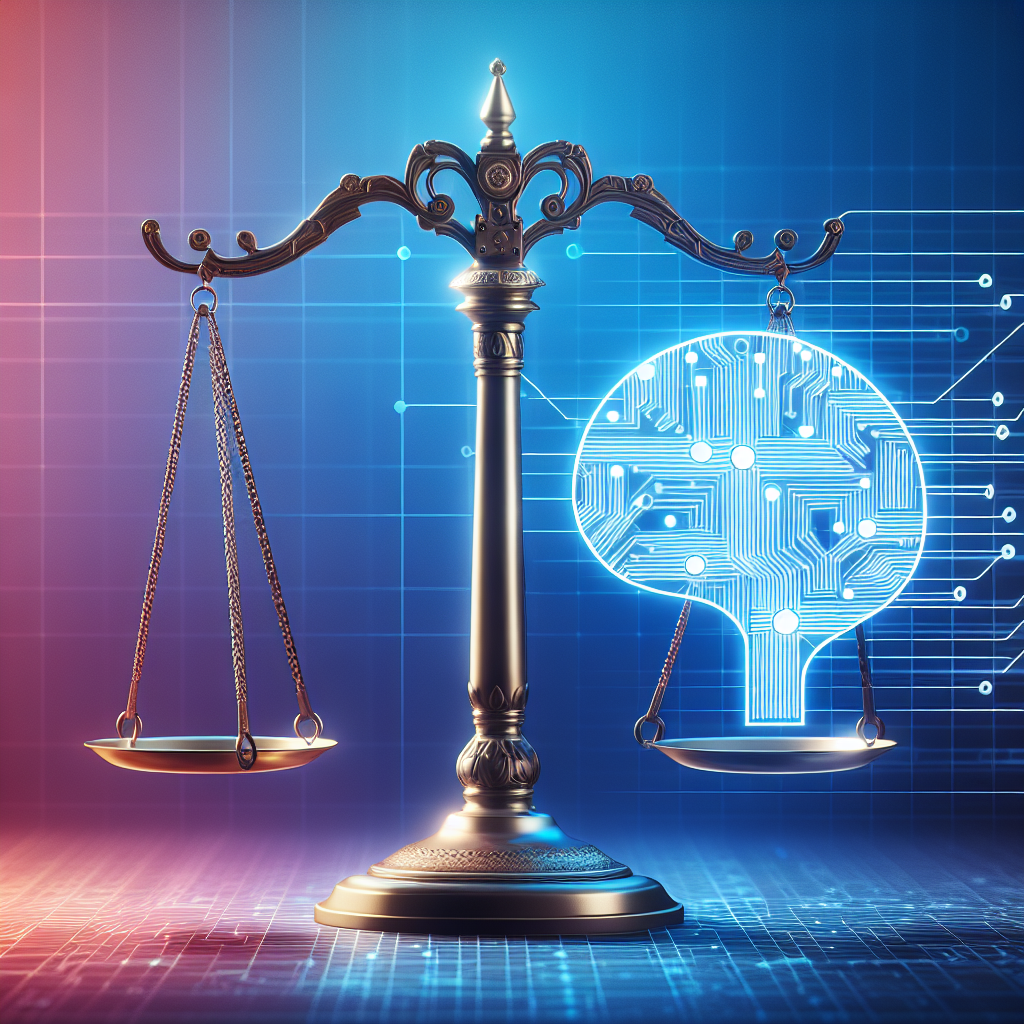AI and Access to Justice: Bridging the Justice Gap
In recent years, the legal industry has seen significant advancements in technology, particularly in the field of artificial intelligence (AI). AI has the potential to revolutionize the way legal services are delivered, making them more accessible, efficient, and affordable. One area in which AI has the potential to make a significant impact is in increasing access to justice for individuals who may not have the means to hire a lawyer.
The justice gap refers to the disparity between those who can afford legal representation and those who cannot. This gap is particularly pronounced in civil cases, where individuals may be facing issues such as eviction, debt collection, or family law matters. According to the Legal Services Corporation, a government-funded organization that provides legal assistance to low-income individuals, approximately 86% of civil legal problems reported by low-income individuals in the United States received inadequate or no legal help.
AI has the potential to bridge this justice gap by providing tools and resources that can assist individuals in navigating the legal system and resolving their legal issues. AI-powered platforms can provide legal information, guidance, and even automated document preparation, making it easier for individuals to represent themselves in court or resolve their legal issues outside of court.
One of the key advantages of AI in increasing access to justice is its ability to scale. AI-powered platforms can reach a large number of individuals simultaneously, providing legal assistance to those who may not have access to traditional legal services. Additionally, AI can provide personalized and tailored legal assistance based on an individual’s specific legal issue, making it easier for individuals to understand and navigate the legal system.
AI can also help to reduce the cost of legal services, making them more affordable for individuals who may not have the means to hire a lawyer. By automating routine legal tasks, AI can free up lawyers to focus on more complex and high-value work, reducing the overall cost of legal services. Additionally, AI-powered platforms can provide legal assistance at a fraction of the cost of traditional legal services, making them more accessible to individuals with limited financial resources.
AI can also improve the efficiency of the legal system, reducing the backlog of cases and increasing the speed at which legal issues are resolved. By automating routine tasks such as document review and legal research, AI can help to streamline the legal process and ensure that cases are resolved in a timely manner. This can be particularly beneficial in cases where individuals are facing urgent legal issues, such as eviction or domestic violence.
Despite the potential benefits of AI in increasing access to justice, there are also a number of challenges and limitations that need to be addressed. One of the key challenges is the potential for bias in AI-powered platforms. AI algorithms are only as good as the data they are trained on, and if the data used to train an AI platform is biased or incomplete, the platform may produce biased or inaccurate results. This can be particularly problematic in the legal context, where decisions can have significant consequences for individuals.
Another challenge is the potential for AI to undermine the role of lawyers in the legal system. While AI can provide valuable tools and resources to assist individuals in navigating the legal system, it is not a substitute for the expertise and experience of a trained lawyer. It is important to strike a balance between leveraging AI to increase access to justice and ensuring that individuals have access to quality legal representation when needed.
Despite these challenges, the potential benefits of AI in increasing access to justice are significant. By leveraging AI-powered platforms, individuals can access legal information and assistance that may not be otherwise available to them, empowering them to navigate the legal system and resolve their legal issues. As AI continues to evolve and advance, it has the potential to revolutionize the way legal services are delivered, making them more accessible, efficient, and affordable for all individuals.
FAQs
Q: How can AI help to increase access to justice?
A: AI can provide tools and resources that assist individuals in navigating the legal system and resolving their legal issues. AI-powered platforms can provide legal information, guidance, and even automated document preparation, making it easier for individuals to represent themselves in court or resolve their legal issues outside of court.
Q: What are the benefits of AI in increasing access to justice?
A: AI can help to bridge the justice gap by providing personalized and tailored legal assistance to individuals who may not have access to traditional legal services. AI can also reduce the cost of legal services, improve the efficiency of the legal system, and provide legal assistance at a fraction of the cost of traditional legal services.
Q: What are the challenges of AI in increasing access to justice?
A: One of the key challenges is the potential for bias in AI-powered platforms. AI algorithms are only as good as the data they are trained on, and if the data used to train an AI platform is biased or incomplete, the platform may produce biased or inaccurate results. Another challenge is the potential for AI to undermine the role of lawyers in the legal system.
Q: How can the potential challenges of AI in increasing access to justice be addressed?
A: To address the potential for bias in AI-powered platforms, it is important to ensure that the data used to train AI algorithms is unbiased and representative. Additionally, it is important to strike a balance between leveraging AI to increase access to justice and ensuring that individuals have access to quality legal representation when needed.

